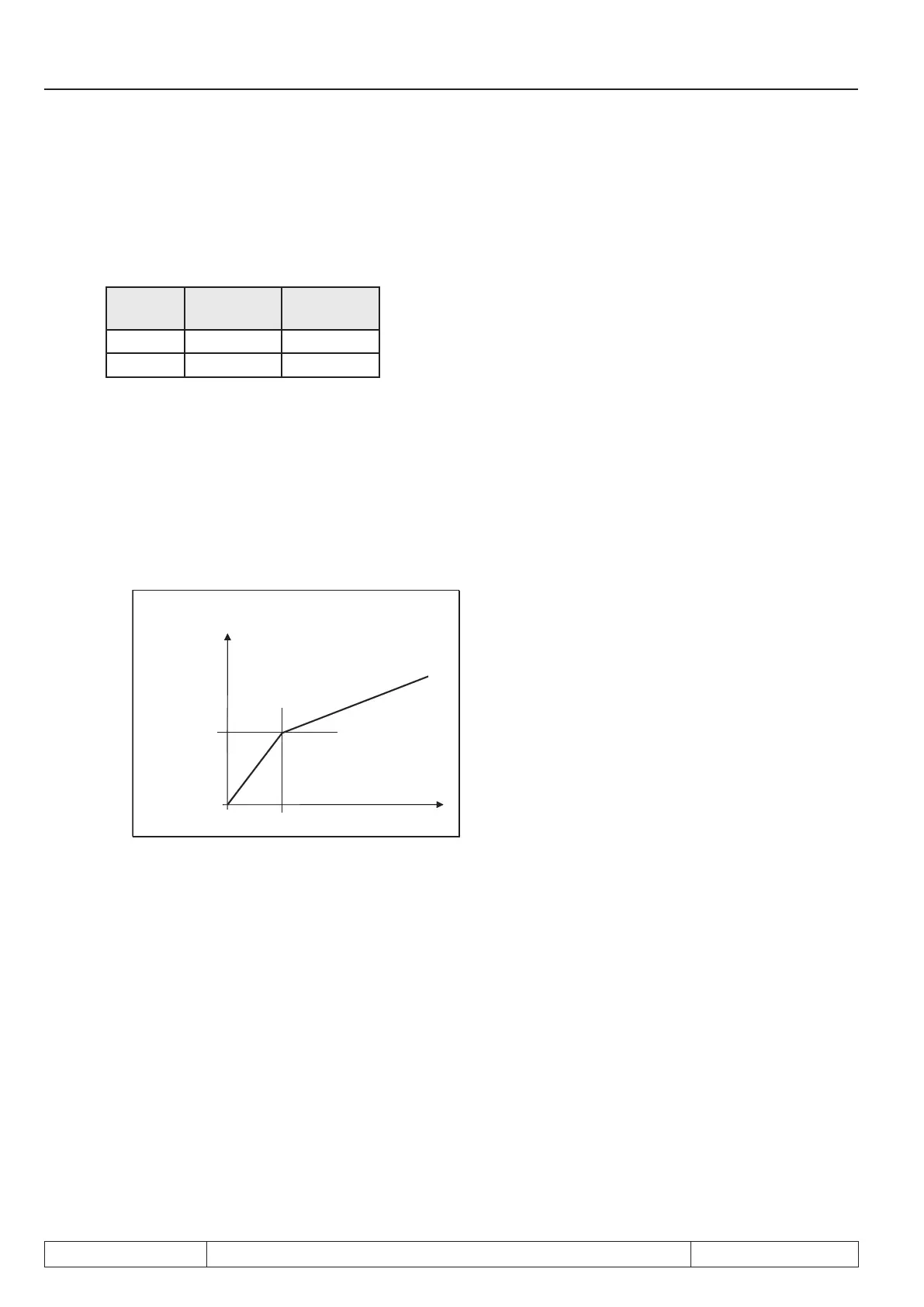Page 7.5 - 28 COMBIVERT F5-A, -E, -H © KEB, 2012-10
Motor data and controller adjustments of the asynchronous motor
7.5.2.4.1 ASCL / low speed operation
The operation at small speed is a critical range which should be passed very quickly.
The size of this range cannot be indicated universally valid. It is strongly dependent on the used motors.
The usable speed range for standard-asynchronous motors is approx.:
Power mot. opera-
tion
gen. opera-
tion
2.2 kW 1 : 50 1 : 20
85 kW 1 : 100 1 : 50
Start-/ stop ramp for low speed (dS.21 / dS.22)
In order to leave the critical range of small speed at starting and stopping there is an additional ramp for this
range.
The ramps is dened by parameter dS.21 "auxilliary ramp/ speed limit" and dS.22 "auxilliary ramp/time".
Parameter dS.21 indicates the speed range for which the start ramp applies. dS.22 indicates the acceleration-/
deceleration time.
200 min
-1
Anzeige Rampenausgang
( ru.02 )
Zeit0,2 s
Example:
ud.02 = 4 (4000 rpm mode)
dS.21 = 200 rpm
dS.22 = 1s
ASCL model shutoff during deceleration (dS.19, dS.20)
If the drive is to be stopped, the critical range of low frequencies must be passed again.
The additional problem of the drive not stopping completely, but instead running permanently at a low frequency
with a very high current occurs here, leading to a miscalculation of the speed.
Under the following conditions, therefore, the mode is switched from vector controlled to current regulated,
frequency controlled operation:
- Drive decelerates
- the estimated output frequency is smaller than dS.19 ("speed limit model switch-off DEC")
The drive then shows the following behaviour:
- the output frequency is ramped down according to the adjusted deceleration ramp
- the current is kept constant starting from the switching time
The parameter dS.19 is loaded with a default value by the identication or by Fr.10 "reset eld-oriented control-
ler parameters". Should problems still occur during deceleration, the value for dS.19 can be increased.

